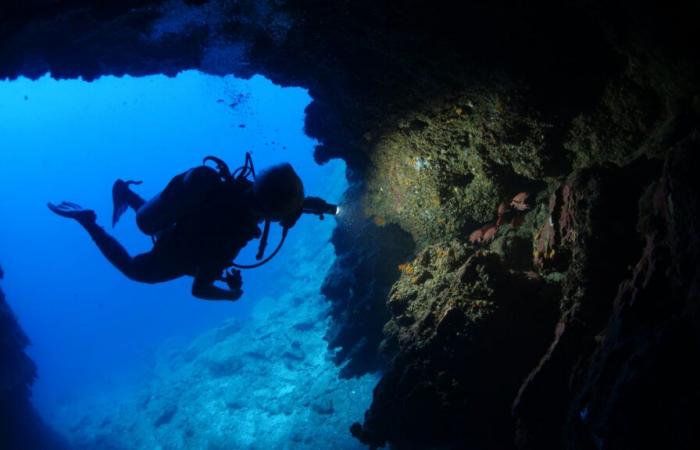A truly colossal colony. In the southwest Pacific, divers have discovered the largest coral in the world, stretching several dozen meters.
Giant coral
When they visited the site in mid-October, scientists and members of National Geographic thought that this dark mass, located a few hundred meters from the east side of Malaulalo Island (Solomon Archipelago), was the wreck of a ship. The first dives revealed a treasure of a very different nature: a coral giant.
Made up of a billion genetically identical polyps acting as a single organism, this colony of Peacock nail turns out to be larger than an adult blue whale: measuring 34 meters long and 32 wide, it would, according to initial estimates, be around 300 years old.
« We can call it a happy accident », Estimates Enric Sala, of the Pristine Seas project, aiming to promote the protection of ocean ecosystems through exploration and research. “ It is by far the largest coral colony ever discovered, far eclipsing the previous record holder [une colonie de Porites découverte aux Samoa américaines en 2019, qui mesurait 22,4 mètres de diamètre pour 8 de haut]. »
A vital habitat to protect
In recent years, temperatures record recorded in the world’s oceans have led to widespread coral bleaching. While many of the reefs surrounding the Solomon Islands have been heavily affected, the recently discovered colony, described as a vital habitat for local ocean life (fish, crustaceans, crabs and marine worms) appears to be in good health.
With corals also affected by overfishing and pollution, Sala and his colleagues are campaigning for more marine protected areas (MPAs) to be created.
« They will not prevent the oceans from warming – limiting this phenomenon will not require reducing our carbon emissions – but they can help us save precious time by making reefs more resilient », he explains.






